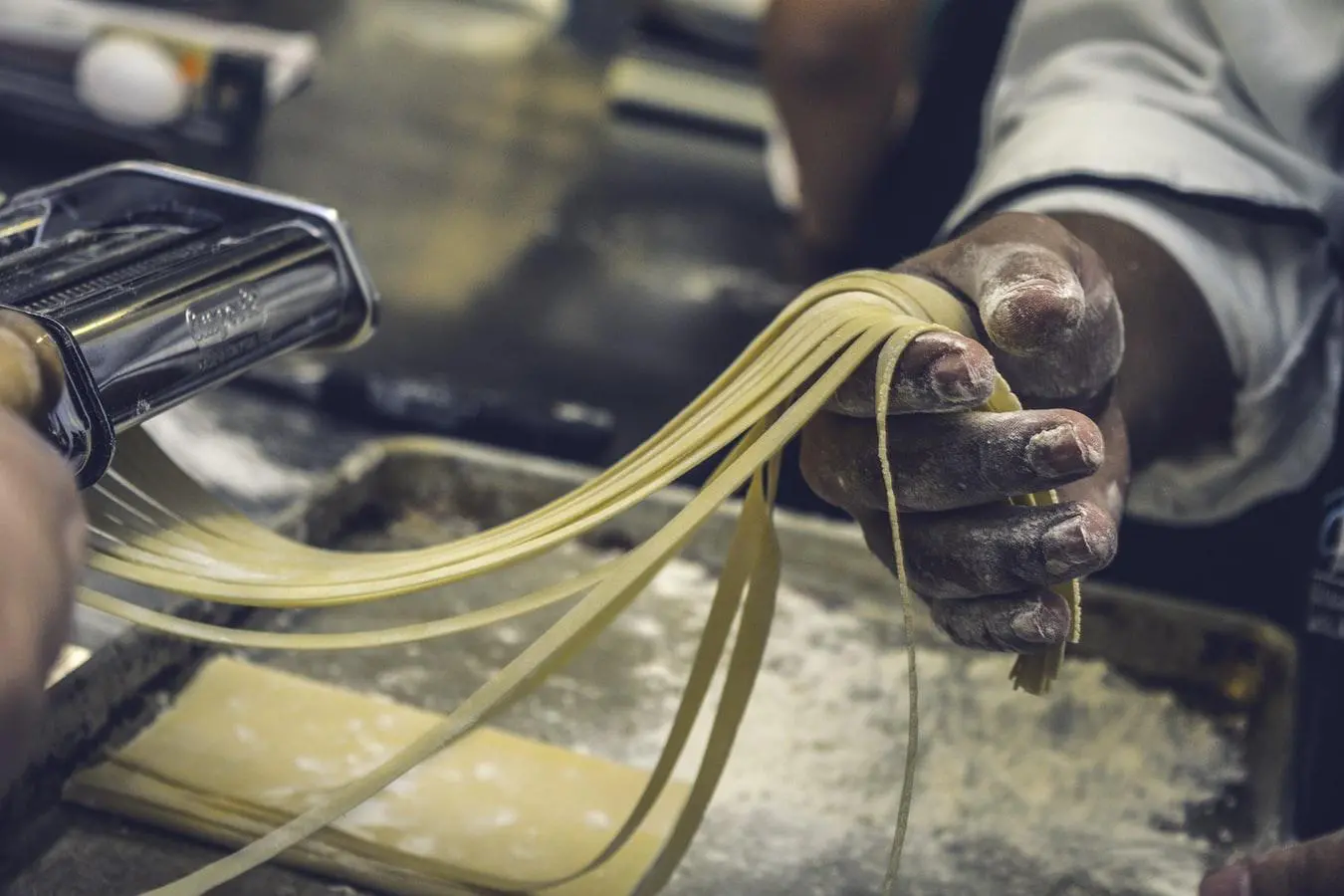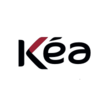Summary of our market study
In France, the pasta market is worth around €1.1 billion.
In 2022, overall pasta sales rose by almost 20% in value. This increase will continue into 2023.
Pasta accounts for a significant share of the €1.9 billion starch market. Nearly 70% of the population consumes pasta at least once a week.
Premium and "well-being" pasta, organic and whole-wheat varieties are enjoying sustained growth, even though the organic sector has slowed by 7.5% in 2022. The most popular pasta is spaghetti, followed by penne, fusilli and tagliatelle.
Producer price indices for basic ingredients such as durum wheat and eggs have soared. Egg prices have risen by around 80%.
French pasta production is concentrated among a few large companies, in particular Ebro Foods and its Panzani and Lustucru brands. Italian brand Barilla has strengthened its position, with sales expected to reach 720 million euros by 2022.
France's pasta balance is in deficit
Pasta is mainly distributed through supermarkets, which account for almost 80% of sales. Private labels are gaining market share.
Players in the French pasta market
- Ebro Foods, a Spanish food conglomerate with the Panzani and Lustucru brands, has a 60% market share.
- Saint Jean, artisan pasta
- Barilla
- Pastacorp
- Alpina Savoie - specializing in niche segments such as crozets
to understand this market
Detailed content of our market study
 Inforamtion
Inforamtion
- Number of pages : 35 pages
- Format : Digital and PDF versions
- Last update :
 Summary and extracts
Summary and extracts
1 Market overview
1.1 Market overview and definition
Pasta is a food made from flour, durum wheat semolina, water, salt, and sometimes eggs, other cereals or legumes, and various forages. Pasta is a staple of the French diet, with 70% eating it at least once a week, and each inhabitant consuming an average of 8.6 kilos a year.
The French pasta market proved dynamic in 2023. Sales of dry pasta rose by 11% in value and 1% in volume. In supermarkets, pasta accounts for almost twice as much as rice and four times as much as semolina and cereals.
At the same time, the fresh pasta segment grew by 14.4% in value and 4.8% in volume. Although smaller in size, this segment has grown three to four times faster than dry pasta in recent years. It is attracting more and more players, such as the giant Panzani, which entered the market in 2024.
The success of fresh pasta reflects the French people's desire to consume "better", by turning to higher-quality products. Premium pasta grew by 11.7% in 2023. This desire, which has been palpable for several years, may however come up against inflation, which has caused sales of organic pasta, for example, to fall by 9.8% in 2023. The retail price of a kilo of pasta increased by 43% between 2021 and 2023, due to the rising cost of raw materials (wheat, eggs). However, inflation seems to be coming to an end in 2024.
The sector is highly concentrated in France, with a handful of brands dominating the market: Panzani and Barilla for dry pasta, Lustucru and Rana for fresh pasta. Their main competitors are private labels, which have taken advantage of inflation to promote their lower prices and win market share. For national brands, the challenge of moving upmarket is twofold: to meet consumer expectations and to stand out from private labels. Made in France and the use of "tricolore" durum wheat - championed by French pastiers such as Panzani, Lustucru and Alpina Savoie -, the launch of new products, and the broadening of ranges into new segments are all part of this strategy.the launch of new products, and the expansion of ranges into premium or innovative segments, such as vegetable pasta, all represent opportune levers for market players to activate.
1.2 The global market
The global pasta market will be worth $**.** billion in ****. by ****, at a CAGR (***) of *.**%, it could exceed $*** billion. This growth is linked to rising demand, particularly in Asia, Europe and the United States. Pasta meets the need for convenient, easy and inexpensive food. It is also compatible with societal trends towards reduced consumption of meat products.
global pasta market sales trend World, ****-****, in billions of dollars Source: ****
Dry pasta will account for **% of the global market in ****, ahead of fresh pasta at around **% and canned pasta at *%.
Market breakdown by pasta type World, ****, as % of total Source: ****
Italy is the world's leading pasta producer, ahead of the United States and Turkey. France ranks **th, with ***,*** tonnes of pasta produced in ****.
Main pasta-producing countries World, ****, in thousands of tons Source: ****
1.3 The European market
The European pasta market is expected to grow by *.*% per year until ****, from $**.** billion in **** to $**.** billion in ****. by then, it would represent just over a quarter of the world market, compared with just under a third in ****. Faster market growth in other regions (***) explains this difference.
pasta market sales trends Europe, ****-****, in billions of dollars Source: ****
European pasta consumption and production were boosted by the Covid-** crisis in ****. Production exceeded * million tonnes for the first time this decade. While these figures logically fell in ****, they rose again in ****, with over * million tonnes consumed.
Pasta production and consumption European Union, ****-****, thousands of tons Source: ****
1.4 The French market
The French dry pasta market rose by **% to *.** billion euros in ****. This increase is mainly due to inflation, which has pushed up prices, but not only: volumes sold are also up by *%, indicating an overall increase in sales in the department over the past year. [***]
Pasta is thus the most widely sold starch in France, ahead of rice (***).[***]
Classic pasta emerges as the leading segment with *** million euros in value, ahead of quick-cooking (***) pasta, *** million, and egg or regional pasta, ** million.
Sales by pasta category France, ****, in millions of euros Source: ****
All these segments showed growth in ****, with the exception of organic products, which suffered from inflation. Wholegrain pasta, +**.*%, and quick-cooking (***) pasta, +**.*%, recorded the strongest sales increases.
[***] Sales by pasta category France, ****, in millions of euros Source: ****
The parallel market for fresh pasta is not as large as that for dry pasta***.* million euros between January **** and January ****, it continues its rapid ascent, growing three to four times faster than the dry pasta market in recent years. [***]
For producers of pasta listed under NAF code **.**, sales rose slightly in ****, to *.*** billion euros. These companies have seen a resurgence in activity since the Covid-** crisis, whereas their sales had previously been ...
1.5 Foreign trade
The figures in this section are mostly obtained from UN Comtrade code ****: pasta, whether or not cooked or stuffed with meat or other substances, or otherwise prepared, such as spaghetti, macaroni, noodles, lasagne, gnocchi, ravioli, cannelloni; couscous, whether or not prepared. The code therefore also covers couscous, which is not included in the scope of the study.
France imports far more pasta than it exports. In ****, the value of French pasta imports exceeded one billion dollars for the first time. **% of pasta consumed in France in **** was imported, compared with **% in ****. [***]
While exports are also increasing year on year, the gap with imports is widening all the time. The French trade balance for pasta and couscous is therefore tending to become increasingly negative: -*** million euros in ****, compared with -*** million euros in ****.
imports and exports of pasta and couscous France, ****-****, in millions of dollars Source: ****
The increase in this gap can also be seen in the volumes of pasta consumed imported and pasta exported each year by France. While exports have remained fairly stable since ****, imports rose sharply in ****, before falling back and then rising again in subsequent years.
evolution of pasta import and export volumes France, ****-****, in ...
2 Demand analysis
2.1 The French, major pasta consumers
Total pasta consumption volume in France peaked in **** during the Covid-** crisis. Although it then fell back in ****, it has since picked up again, to levels higher than those observed before the crisis. Consumption is therefore tending to rise, illustrating the continuing strong interest of the French in pasta.
evolution of total pasta consumption volume France, ****-****, in thousands of tons Source: ****
This dynamic is confirmed by the fact that the French are the world's eighth-largest consumers of pasta, with *.* kilos consumed per capita per year. In Europe, only Italy and Greece are ahead of France.
Countries with the highest pasta consumption World, ****, in kilos per capita per year Source: ****
2.2 A product consumed by everyone
**% of French people eat pasta at least once a week, half of them more than once a week.
Pasta consumption frequency in France France, ****, in Source: ****
Pasta is a staple food in many households. In its February **** study on the evolution of pasta, rice and potato purchases, not renewed since, FranceAgriMer shows that all age groups buy pasta. The main consumers are young people under **, for whom pasta accounts for almost **% of total starch consumption. The older they get, the more varied their diet becomes, with the share of pasta and rice declining in favor of fresh potatoes, which account for **% of consumption by the over-**s.
Pasta's share of household starch consumption by age of purchaser France, ****, in % source: Synthèse **** - FranceAgriMer
All income classes are equally concerned. Pasta is even the only starch that saw its consumption increase between **** and ****, whatever the consumer's income class, although modest households are the most concerned.
Quantity of pasta purchased according to financial status France, **** / ****, in kg/UC (***) Source: ****
More recent data confirm that pasta remains France's favorite starch: between March **** and March ****, the pasta segment was the only one to post growth in volume and value, while rice, semolina and pulses ...
2.3 Pasta in all its forms
Tagliatelle is the favorite pasta of the French in ****, ahead of spaghetti and coquillettes. But the close ranking shows that several major pasta families are popular.
Types of pasta preferred by the French France, ****, % of total Source: ****
More and more French people are also buying pasta in the form of ready-made meals. Between **** and ****, this is one of the only categories in the ready meals market to have seen its buyer rate increase, from **% to **%.
evolution of the prepared meals buyer rate France, ****-****, in Source: ****
Fresh pasta is also proving increasingly popular: between January **** and January ****, the segment grew by **.*% in value, to ***.* million euros, and by *.*% in volume, to ***,*** tonnes. [***]
2.4 Towards a demand for higher quality
The French tend to pay more attention to their diet and the impact it can have on their health, the environment and so on. Healthy eating thus appears to be a priority shared by all age groups of the French population, while "responsible eating" and "ethical eating" are also of concern to some consumers.
Meaning of "eating well" for the French, by age group France, ****, in Source: ****
The pasta market must respond to these new trends, as illustrated by the growth of premium pasta, of better quality (***).
Made in France also falls into this category: when customers saw the "Blé *** % français" (***) label on Panzani pasta packets, **% thoughtit was a superior-quality product. [***]
However, this demand for quality is accompanied by higher prices, which can put off consumers. Organic products paid the price in ****, with sales of organic pasta down *.*% to ** million euros. Because of inflation, the French had to make trade-offs unfavorable to this category. **% consumed organic pasta, rice or cereals in ****, * points less than in ****. [***]
2.5 Brands well known to the French
As pasta is a major part of the French diet, the market's leading brands, such as Panzani, Lustucru and Barilla, have a very high level of aided awareness, almost ***%. Panzani is the favorite brand of the consumers surveyed, with an approval rating of **.*%, ahead of Barilla at **.*%.
On the other hand, awareness and appreciation rates drop sharply when the brands evaluated are less famous, such as De Cecco or Rummo, demonstrating the weight that market leaders hold in the eyes of customers.
France's favorite pasta brands France, ****, in Source: ****
Differences in appreciation can be observed according to socio-professional category. CSP- will tend to prefer Panzani to Barilla, with **.*% approval versus **.*%, while the level will be more similar for CSP+: **.*% for Panzani, **.*% for Barilla. CSP+ also appreciate less well-known brands more. Finally, only inactive people give a higher rating to Barilla, to the detriment of Panzani.
French people's favorite pasta brand by socio-professional category France, ****, in Source: ****
3 Market structure
3.1 Market value chain
The pasta market involves a number of different players:
Raw material suppliers, active in the agricultural sector, who supply the rest of the chain with ingredients (***). Processors can then act as intermediaries, transforming wheat into flour, for example. But end-product producers can also take on this task themselves: they then integrate it into their manufacturing chain, as do the biggest industrialists, who source wheat directly and produce their own flour. Distributors, of which supermarkets are the main representatives, then sell the end products.
Traditional dry pasta is characterized by a short list of ingredients, reducing the diversity of suppliers. Other segments, such as filled pasta or pasta-based ready meals, may require more resources.
3.2 Producers
The main dry pasta producers account for almost two-thirds of the market in terms of value. Two leaders stand out: Panzani, with **.*% market share, and Barilla, with **.*%. Behind them, their closest competitors hover between *% and *%.
Market share in value of different pasta brands France, ****, in Source: ****
In volume terms, the gap between Panzani and Barilla, with its more premium positioning, widens, while most other brands fall below the *% mark.
Market share by volume of different pasta brands France, ****, in Source: ****
The battle is therefore mainly between Panzani, a French manufacturer owned by the Luxembourg fund CVC Capital Partners since ****, and the Italian group Barilla. Each has launched several initiatives in recent years:
Panzani plans to invest around ** million euros between **** and **** in its Marseille plant, its largest, to replace its machines, which can make up to ** different types of pasta. [***] For its part, Barilla has announced a global investment plan of * billion euros worldwide for the period ****-****, to improve its competitiveness and boost innovation in all the departments where the brand is present (***). In ****, Barilla had already innovated in France by launching a new ultra-premium range, Al Bronzo, which the following year conquered *% of this category. In this vein, new ...
3.3 Distributors
Pasta distribution is largely dominated by supermarkets. Of all starchy foods and pulses, which include pasta, **% were sold in supermarkets in ****-****, and **.*% in supermarkets. E-commerce is playing an increasingly important role, with a **.*% market share, up *.* pt year-on-year. Specialty stores, which generally offer more upmarket products, account for just over *% of distribution.
Market share of starch and pulses distribution channels France, February ****-February ****, as % of sales Source: ****
In addition to their distribution activities, supermarkets play a key role in this market via their private labels. In ****, these accounted for **% of pasta sales by value (***). "The main national brands have lost out to private labels", commented Fanny Allain, Director of Trade Marketing and Category Management at Barilla France, in Linéaires. Private labels have taken advantage of the inflationary context to enhance their price positioning, with prices **% to **% lower than those of their competitors. [***]
Distribution of pasta sales between private labels and national brands France, ****, in Source: ****
"The price advantage remains in favor of private labels. However, distributors are not hesitating to move upmarket either", analyzed Linéaires in March ****. Private labels have also become aware of consumer expectations, and are launching higher-quality products:
Since ****, Intermarché has been offering the ...
4 Offer analysis
4.1 Different types of pasta
The pasta market is made up of different products:
Dry pasta is one of the staple foods of the French. It is available in a wide range of segments: quick-cooking, wholewheat, other cereals, fancy, long, short, in a variety of shapes and colors, gluten-free, etc. The most common are spaghetti, coquillettes, penne and farfalle. The most common are spaghetti, coquillettes, penne and farfalle; Fresh pasta is sold in the refrigerated section and should be eaten more quickly than dried pasta. Generally egg-based, they have the advantage of shorter cooking times and a more melt-in-the-mouth texture. Stuffed pasta frequently falls into this category. Canned pasta is often stuffed pasta that has already been cooked and simply needs to be reheated. Prepared pasta dishes form an ancillary segment, which can include frozen dishes, tray meals, catered salads and so on.
4.2 Prices
After remaining stable for six years, the price of pasta and couscous rose sharply from **** onwards due to inflation. Over the first eight months of ****, the consumer price index averaged ***.**, compared with **.** in ****, an increase of over **%.
consumer price index trends for pasta and couscous France, ****-****, index *** in **** Source: ****
The average retail price of pasta per kilo will rise from €*.** in **** to €*.** in ****, an increase of **%. The rise in the cost of durum wheat, the main raw material, explains this increase, as does the rise in the gross margin of manufacturers (***), who have also been hit by the rise in energy prices.
evolution of the retail price of a kilo of pasta France, ****-****, in € Source: ****
In ****, the cost of durum wheat began to fall, but manufacturers' and distributors' gross margins (***) continued to rise, which explains the price increase. By ****, however, inflation seems to be coming to an end, and prices could begin to fall. [***]
4.3 Made in France mobilizes the entire industry
at a time when food sovereignty and the reduction of the environmental impact of food are key issues, the use of durum wheat made in France appears to be an essential element for the pasta industry. In France, a ** million euro sovereignty plan, funded by the French government and the Intercéréales interprofessional organization, was launched at the Salon de l'agriculture ****. The aim is to halt the decline in durum wheat production, which halved between **** and **** to *.* million tonnes a year, and to secure supplies for pasters and semolina manufacturers, who alone consume around half of French harvests. The industry is also aiming to boost the share of French pasta, which now accounts for just **% of national consumption, compared with over **% in the ****s. "This drop in market share is linked to Italian competition, but also to that of the Spanish, who have taken market share from us via private labels," notes Nicolas Guize, Chairman of Aster Développement, the group that owns Alpina Savoie and Pâtes Grand'Mère. [***]
French pasta producers (***), who want made-in-France pasta to regain ** points of market share market share in ****, have already made a major commitment to made in France: since ****, almost all the ...
4.4 Fresh pasta, a highly promising and increasingly competitive segment
The French fresh pasta market grew by **.*% between January **** and January ****, to ***.* million euros. In volume terms, it has grown by *% annually since ****. The sector is therefore booming, and "its potential remains significant, since one household in two does not buy fresh pasta", points out Les Echos. [***]
Stuffed pasta and pan-fried gnocchi share the top of the category, but the latter are proving far more dynamic : their volume sales rose by **% between August **** and August ****, while those of stuffed pasta stagnated at -*%. Classic gnocchi grew by *% over the same period, while smooth/simple pasta remained unchanged.
Sales breakdown by fresh pasta category France, August ****-August ****, as % of sales Source: ****
Lustucru dominates this department with over **% market share by volume, ahead of Rana. In contrast to dry pasta, private labels are only a minor player here, with **.*% market share.
Market share of fresh pasta brands France, August ****-August ****, as % of sales Source: ****
Lustucru benefits in particular from its ultra-domination of the pan-fried gnocchi segment, with a market share of almost **% in value.
Market share in value of various brands of pan-fried gnocchi France, January ****-January ****, as % of sales Source: ****
The leading brand intends to maintain its lead by pursuing its policy ...
4.5 Vegetable pasta, a minor category to keep an eye on
Vegetable pasta, made entirely or partly from legume flour (***), first became popular around ****-****. Several major brands entered this segment, such as Barilla and Bonduelle, but failed to establish a lasting presence on the shelves.
At a time when consumers are paying ever greater attention to their diet, pulses now seem to be enjoying a new lease of life, both for their nutritional value and for their environmental qualities. In ****, **% of French people ate pulses at least once a week, including **% more than once. All age groups are involved, with a higher-than-average share among **-** year-olds, **-** year-olds and over-**s. [***]
Percentage of the population eating pulses at least once a week, by age group France, ****, in Source: ****
In spring ****, to take advantage of this momentum, Alpina Savoie unveiled its new range, "Les Végétales", comprising three references (***), made with chickpea flour. "They are already available in the foodservice sector, where over ***,*** guests have tried them, with excellent feedback. [***]
Carrefour is also present on this offer via its Carrefour Veggie brand, offering pasta made with chickpea, split pea or coral lentil flour.
5 Regulations
5 General regulations
Pasta legislation According to legifrance.gouv.fr, it is forbidden to sell :
pasta containing more than **.*% water, with the exception of fresh pasta sold under this name; pasta with an acidity content higher than the maximum set by order of the Minister of Agriculture. NOTA : Decree ****-*** of July **, **** art. * *°: the Decree of December **, **** is repealed with effect from the date of publication of the order provided for in article * of Decree ****-***. It is repealed only insofar as it concerns the processing aids on the list established by this decree. Specific legislation for certain categories of pasta The name "pasta with fresh eggs" may only be used for pasta containing, in the same proportions, fresh eggs, as defined by current regulations concerning the prevention of fraud in the egg trade. The use of soft wheat semolina, soft wheat flour or durum wheat flour is strictly forbidden. Furthermore, the use of rice flour to prevent fresh pasta from sticking, or to mask the coloring of the dough by the filling, brings in fecal coliform bacteria in percentages up to ten times the normative value. The name "gluten pasta" may only be used for pasta containing at least **% of nitrogenous matter derived ...
6 Positioning the players
6.1 Company segmentation
- Saint Jean
- Barilla
- Rana (Groupe Giovanni Rana)
- Pastificio Garofalo
- Panzani
- Alpina Savoie
- Rummo
- Valfleuri
- Pâtes Grand'Mère (Heimburger / Aster Développement)
- Treo
- Carrefour Groupe
- E.Leclerc
- Auchan groupe
- Intermarché ITM Les Mousquetaires
- Lustucru Frais (Pastacorp Group)
- Pastacorp (Lustucru, Rivoire et Carret)
- EA Pâtes
- Ateliers bio de Provence - Coquelicot
- SGS AGRAL (mère Maury)
- Les ravioles des grands goulets
- La Raviole du Dauphin
- Horvat
- Ateliers Bio De Provence
- Aux Pates Fraiches
- Che Pasta Nonna
- Chez Roger
- E Picerie
- Ea
- Fiorella
- Francois
- Garofalo France
- Ho Ho France
- Jrn
- Maison Tacca
- Mille Et Une Pates
- Panzani
- Pasta Folie'S
- Pastacorp
- Pastacorp Traiteur
- Patenouille
- Pates Au Logis
- Pates Lanza
- Saint Jean
- Saint Jean Groupe
- Techno Dp
All our studies are available online in PDF format
Take a look at an example of our research on another market!
 Choosing this study means :
Choosing this study means :
Access to more than 35 hours of work
Our studies are the result of over 35 hours of research and analysis. Using our studies allows you to devote more time and added value to your projects.
Benefit from 6 years' experience and over 1,500 industry reports already produced
Our expertise enables us to produce comprehensive studies in all sectors, including niche and emerging markets.
Our know-how and methodology enable us to produce reports that offer unique value for money.
Access to several thousand articles and paid-for data
Businesscoot has access to all the paid economic press as well as exclusive databases to carry out its market research (over 30,000 articles and private sources).
To enhance our research, our analysts also use web indicators (semrush, trends, etc.) to identify market trends and company strategies. (Consult our paying sources)
Guaranteed support after your purchase
A team dedicated to after-sales service, to guarantee you a high level of satisfaction. +44 238 097 0676
A digital format designed for our users
Not only do you have access to a PDF, but also to a digital version designed for our customers. This version gives you access to sources, data in Excel format and graphics. The content of the study can therefore be easily retrieved and adapted for your specific needs.
 Our offers :
Our offers :
the pasta market | France
- What are the figures on the size and growth of the market?
- What is driving the growth of the market and its evolution?
- What is the positioning of companies in the value chain?
- Data from several dozen databases
Pack 5 études (-25%) France
- 5 études au prix de 74 €HT par étude à choisir parmi nos 1200 titres sur le catalogue
- Conservez -25% sur les études supplémentaires achetées
- Choisissez le remboursement des crédits non consommés au terme des 12 mois (durée du pack)
Consultez notre catalogue d’études sectorielles


















